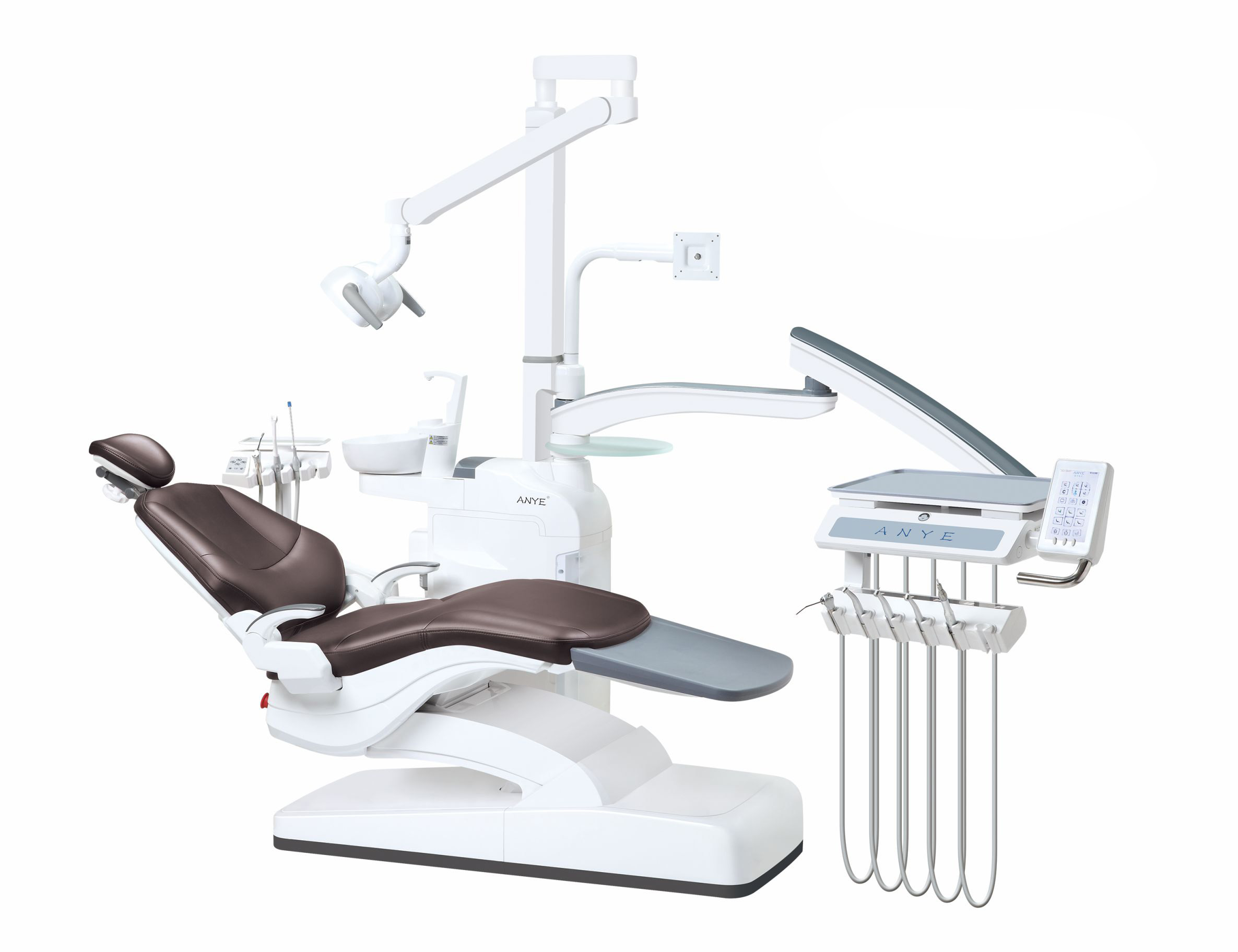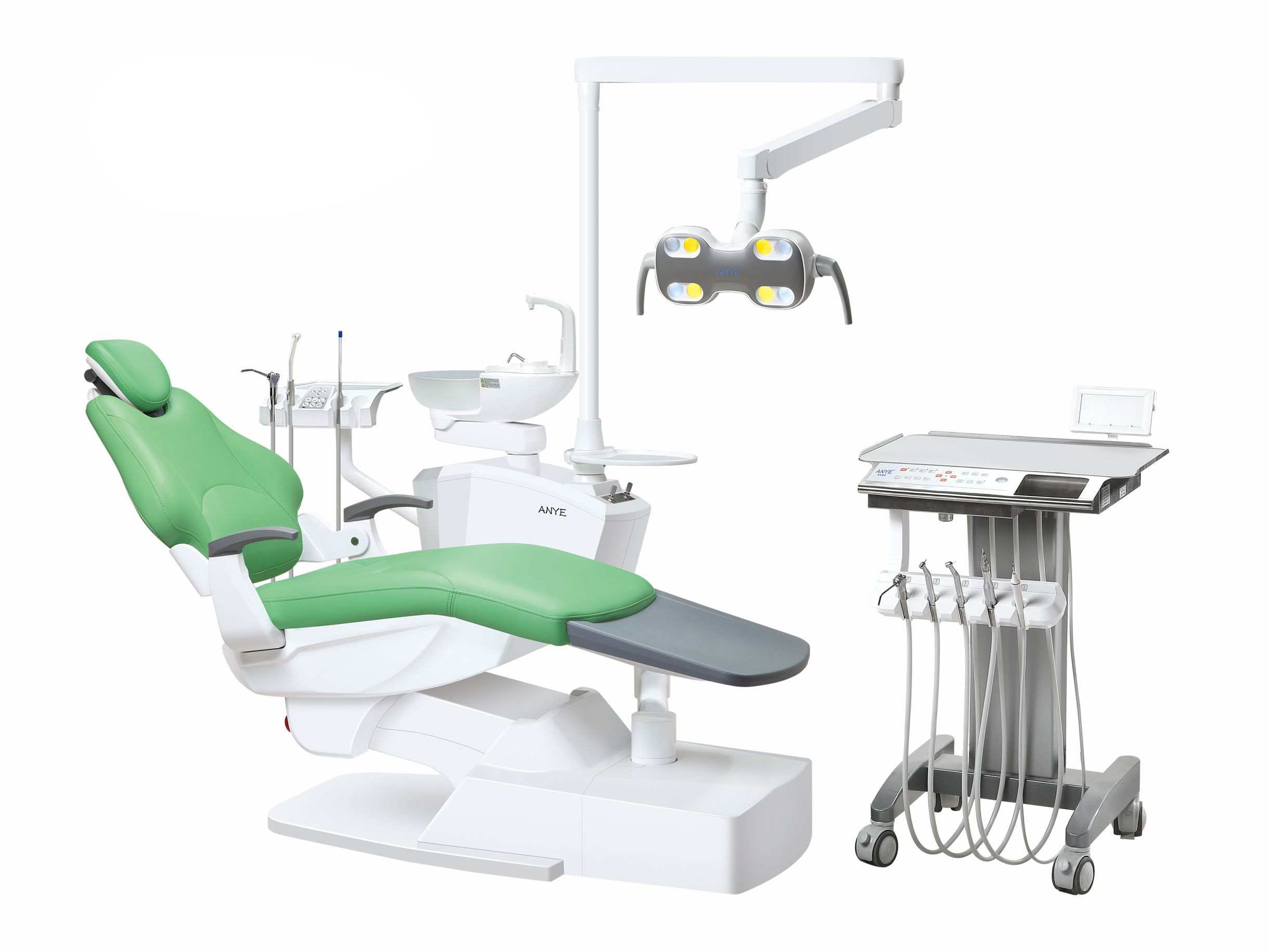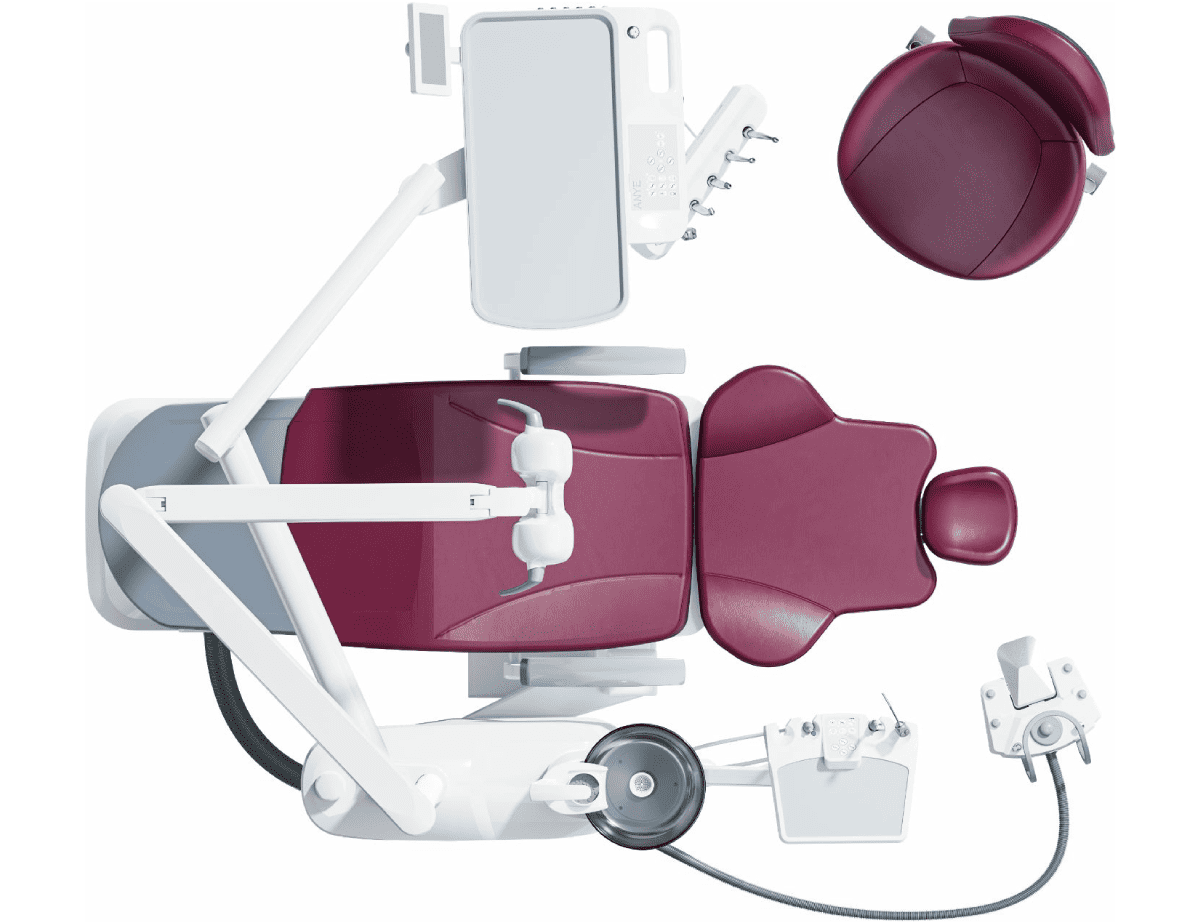Ergonomic Dental Chair Benefits: A Comprehensive Guide
In the demanding field of dentistry, where precision and patient comfort are paramount, the importance of ergonomics cannot be overstated. Ergonomic dental chairs are more than just aesthetically pleasing; they represent a science-backed approach to chair design that prioritizes the health and well-being of both dentists and patients. This guide explores the significant advantages of ergonomic dental chairs, examining their impact on dental practitioners, patients, and the overall success of a dental practice.
Understanding Dental Chair Ergonomics
Dental chair ergonomics focuses on the design and functionality of dental chairs to promote optimal posture and support for both the dentist and the patient. This includes the chair's adjustability, cushioning, and overall layout, all aimed at minimizing musculoskeletal strain and discomfort during dental procedures. Ergonomic dental chairs are essential for promoting the health and well-being of dentists. Spending long periods hunched over patients in non-supportive chairs can lead to musculoskeletal disorders (MSDs) like back pain, neck strain, and carpal tunnel syndrome.
Ergonomic chairs, equipped with features like adjustable backrests, lumbar support, and proper seat height, encourage a neutral posture, thereby reducing these risks.The benefits of ergonomic seating extend to patients as well. A comfortable and well-supported patient is more likely to have a positive dental experience. Proper positioning of headrests and armrests minimizes neck and shoulder strain, while adjustable chair positions allow for optimal access during treatment.
To delve deeper into the principles of ergonomics as they relate to dental practice, consider these aspects:
Neutral Posture: Ergonomics aims to maintain the body in a neutral posture, which means keeping the spine aligned and avoiding extreme bending or twisting. In the context of a dental chair, this translates to adjustable features that allow both the dentist and the patient to maintain a comfortable and balanced position.
Reach and Accessibility: The design of the dental chair and the surrounding workspace should minimize the need for excessive reaching or stretching. Instruments and equipment should be easily accessible, reducing strain on the arms and shoulders.
Motion Economy: Ergonomics seeks to streamline movements and eliminate unnecessary actions. A well-designed dental chair can facilitate efficient workflows, reducing the time and effort required to perform dental procedures.
Visual Comfort: Ergonomics also addresses visual comfort by optimizing lighting and reducing glare. Proper illumination can minimize eye strain and improve the dentist's ability to perform delicate tasks with precision.
Benefits of Ergonomic Dental Chairs
Incorporating ergonomic dental chairs into a dental practice offers numerous and far-reaching advantages:
Reduced Risk of Musculoskeletal Disorders (MSDs) Among Dentists: By promoting proper posture and minimizing awkward positioning, ergonomic chairs significantly decrease the risk of dentists developing painful and debilitating MSDs, which safeguards their health and allows for long-term career sustainability.
Enhanced Comfort and Efficiency During Dental Procedures: Dentists working in comfortable, ergonomically designed chairs can focus more intently on their tasks, leading to increased efficiency and improved treatment outcomes.
Improved Patient Experience and Satisfaction: Patients who feel supported and comfortable throughout their dental procedures are more likely to have a positive perception of their experience. Ergonomic chairs contribute to a more relaxing environment, fostering trust and loyalty towards the practice.
Increased Productivity and Performance in the Dental Office Setting: Reduced dentist fatigue and enhanced focus, facilitated by ergonomic chairs, translate into a more productive and efficient dental practice. A well-rested and comfortable dentist can see more patients and deliver exceptional care throughout the day.
Enhanced Comfort for Patients: With customizable features such as adjustable headrests, lumbar support, and comfortable cushioning, patients can relax and feel at ease throughout their treatment, diminishing anxiety and discomfort often associated with dental visits.
Features to Look For in Ergonomic Dental Chairs
When choosing an ergonomic dental chair, there are several key features to consider:
Adjustability: Look for chairs with a wide range of adjustments, including seat height, backrest angle, and armrest positioning, to accommodate individual preferences and ensure optimal comfort.
Lumbar Support: Proper lumbar support helps maintain the natural curvature of the lower back, reducing spinal pressure and minimizing the risk of back pain.
Seat Design: An ergonomic seat should have a slight forward tilt to promote a neutral pelvic position and maintain the lumbar curve. The seat should also be contoured and padded for even weight distribution and pressure relief.
Armrests: Adjustable armrests provide support for the shoulders and upper back, reducing muscle fatigue during lengthy procedures.
Backrest: A narrow, flexible backrest enables the dentist to get closer to the patient easily while maintaining a neutral posture.
Seat Slide: The seat slide feature allows for the adjustment of the seat depth, enabling practitioners to tailor the chair to their specific preferences.
Mechanism: Look for chairs with smooth and quiet adjustment mechanisms that enable seamless transitions between positions.
Swivel: Enhancing accessibility and workflow.
Beyond these core features, consider the following:
Headrest: The headrest should be adjustable in multiple directions to properly support the patient's head and neck, regardless of their size or position.
Upholstery: The upholstery should be durable, easy to clean, and comfortable to the touch. Look for materials that are resistant to stains and bacteria.
Foot Controls: Foot controls should be intuitive and easy to use, allowing the dentist to adjust the chair's position without using their hands.
Accessories: Consider whether the chair is compatible with accessories such as monitors, lights, and instrument trays.
How Ergonomic Chairs Improve the Overall Patient Experience
Ergonomic dental chairs improve the overall patient experience:
- Patients are more likely to feel comfortable and relaxed during their appointment if they are seated in a chair that supports their body and allows them to maintain a comfortable position.
- This can lead to better communication between the dentist and patient, as well as a more positive overall experience.
- Ergonomic chairs can help reduce the risk of injury or discomfort for patients who may have mobility issues or chronic pain.
Let's elaborate on the ways ergonomic chairs enhance the patient experience:
Reduced Anxiety: Many patients experience anxiety or fear when visiting the dentist. A comfortable and supportive chair can help reduce these feelings, creating a more calming and reassuring environment.
Improved Cooperation: When patients are comfortable, they are more likely to cooperate with the dentist and follow instructions. This can lead to more efficient and effective treatment outcomes.
Enhanced Trust: Patients who feel that their comfort and well-being are being prioritized are more likely to trust their dentist and the dental practice. This can lead to stronger patient-dentist relationships and increased patient loyalty.
Accessibility: Ergonomic chairs can be designed to accommodate patients with disabilities or mobility limitations. Features such as adjustable height and swing-away armrests can make it easier for these patients to get into and out of the chair.
Choosing the Right Ergonomic Dental Chair
Selecting the ideal ergonomic dental chair requires careful consideration of several factors:
Flexibility for Personalized Seating Solutions: The ergonomic chair should offer adjustability features like seat height, backrest angle, and armrest positioning to accommodate the dentist's individual needs and preferences.
Compatibility with Existing Dental Office Setup: Consider the existing layout and workflow of your dental practice. The ergonomic chair should integrate seamlessly with your existing dental unit and assistant stool to allow optimal functionality and space utilization.
Quality and Durability of Dental Equipment: Invest in a well-made chair from a reputable manufacturer. High-quality materials and robust construction mean long-lasting performance and a worthwhile return on investment.
Conclusion
In conclusion, ergonomic dental chairs represent a significant investment in the health, well-being, and productivity of dental professionals, as well as the comfort and satisfaction of patients. Embracing ergonomic dental chairs is a proactive step toward ensuring the long-term success and sustainability of the dental practice while providing exceptional care to patients.




Leave a comment